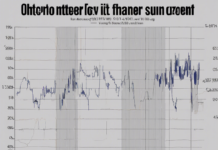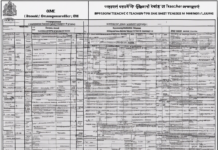The Higher Secondary Certificate (HSC) examination, also known as the 12th-grade board exam, is a crucial milestone in the academic journey of students in Maharashtra, India. With each passing year, the Maharashtra State Board of Secondary and Higher Secondary Education (MSBSHSE) strives to improve the quality of education and evaluation processes to ensure fair and accurate results for students. As we look ahead to 2024, it is essential to analyze the HSC 12th result trends to understand the patterns, challenges, and opportunities that may shape the outcomes for students.
Factors Influencing HSC 12th Result Trends
Several factors contribute to the HSC 12th result trends in Maharashtra. Understanding these elements is crucial for stakeholders to identify areas of improvement and support students effectively.
1. Curriculum Changes:
- Curriculum changes can impact student performance. Adjusting to new syllabi or exam patterns may lead to fluctuations in results.
2. Teaching Methodologies:
- Effective teaching methodologies play a significant role in student learning outcomes. Innovations in teaching approaches can influence result trends.
3. Student Preparation:
- Student preparation is pivotal in determining exam results. Study habits, time management, and access to resources can affect performance.
4. Evaluation System:
- The evaluation system adopted by the board influences result trends. Fair and transparent evaluation processes are essential for accurate outcomes.
Analyzing HSC 12th Result Trends
1. Overall Pass Percentage:
- The overall pass percentage in the HSC 12th exams reflects the success rate of students. Analyzing this trend over the years provides insights into the education system’s effectiveness.
2. Subject-wise Performance:
- Subject-wise performance data helps identify areas where students excel or struggle. This analysis can guide curriculum improvements and teaching strategies.
3. Stream-wise Results:
- Different streams such as Science, Commerce, and Arts may exhibit varying result trends. Understanding these variations enables targeted support for students in each stream.
4. Regional Disparities:
- Regional disparities in HSC results highlight unequal access to quality education and resources. Addressing these gaps is essential for ensuring equitable outcomes for all students.
Challenges in HSC 12th Results Analysis
1. Standardization:
- Ensuring standardization in evaluation processes across different schools and exam centers is a persistent challenge in result analysis.
2. External Factors:
- External factors like socio-economic backgrounds, family support, and mental health can influence student performance, making it challenging to isolate educational factors.
3. Data Interpretation:
- Interpreting data accurately and deriving meaningful insights require expertise in educational research and statistical analysis.
Future Prospects and Strategies
1. Data-driven Interventions:
- Implementing data-driven interventions based on result trends can help identify at-risk students and provide targeted support to improve outcomes.
2. Teacher Training:
- Teacher training programs focused on enhancing pedagogical skills and student engagement can positively impact result trends.
3. Technology Integration:
- Integrating technology in education for personalized learning experiences and assessment strategies can boost student performance in the HSC exams.
4. Community Engagement:
- Community engagement initiatives involving parents, local organizations, and policymakers can create a supportive environment for students, leading to better results.
Frequently Asked Questions (FAQs)
1. What is the significance of analyzing HSC 12th result trends?
- Analyzing HSC 12th result trends helps identify patterns, challenges, and opportunities for improving the education system and student outcomes.
2. How can schools and teachers use result trend data?
- Schools and teachers can use result trend data to tailor teaching strategies, support struggling students, and enhance overall academic performance.
3. Are there specific strategies to address regional disparities in HSC results?
- Targeted interventions such as resource allocation, teacher training, and community engagement can help address regional disparities in HSC results.
4. What role do students play in influencing HSC result trends?
- Student preparation, study habits, and access to resources significantly impact HSC result trends. Active student participation is crucial for academic success.
5. How can policymakers leverage result trend analysis for educational reforms?
- Policymakers can utilize result trend analysis to identify areas for policy intervention, allocate resources effectively, and foster a conducive learning environment for students.
Conclusion
In conclusion, analyzing HSC 12th result trends is a multi-faceted process that requires a thorough examination of various factors influencing student outcomes. By delving into pass percentages, subject-wise performances, and regional disparities, stakeholders can implement targeted interventions to enhance educational experiences and ensure equitable results for all students. Looking ahead to 2024, a data-driven approach, teacher training initiatives, technology integration, and community engagement can pave the way for improved HSC results in Maharashtra.








